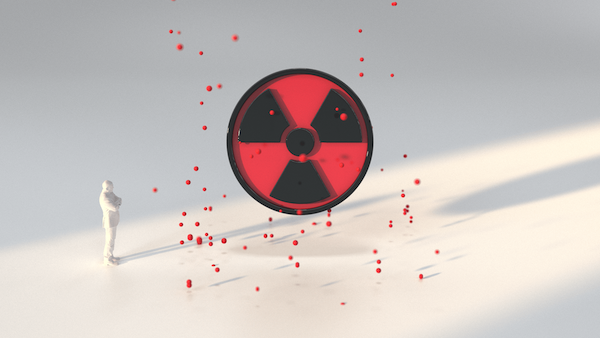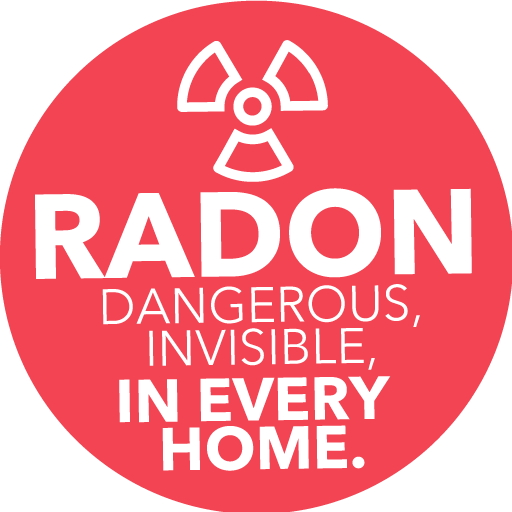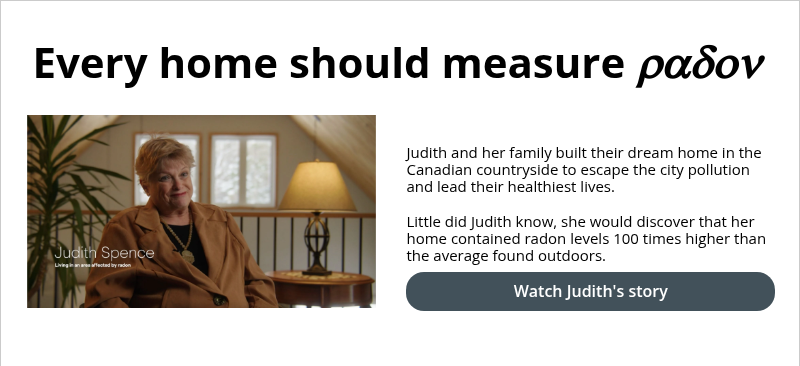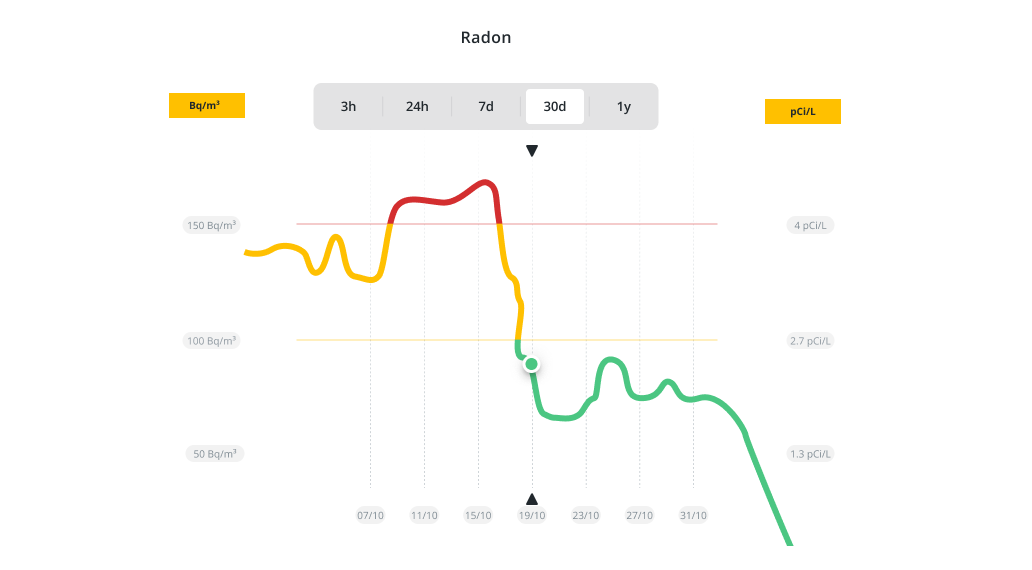How to read a radon level chart?
Airthings View Plus, View Radon, Wave Radon, and Wave Plus have color-coded visual indicators. This makes it easy to get an overview of the air in your home. In addition, you can check in the Airthings app if the radon sensor is good (green), fair (amber), or poor (red).
Radon levels chart from Airthings
What is the difference between pCi/L and Bq/m3?
Picocuries per litre of air, or pCi/L: is one of the preferred measurements for the speed of decay in radon, is equal to one trillionth of a curie, abbreviated as pCi. The pCi unit is used in the United States because it is required by federal law. Just about everywhere else that uses the metric system, including the WHO, measures in Becquerels. 1 pCi/L is equal to 37 Bq/m3.
The Becquerel unit, abbreviated Bq/m3, is named after the scientist Henri Becquerel. The preferred radon level measurement unit is Becquerels per cubic meter, Bq/m3. One Becquerel equals one radioactive disintegration per second.
How to Interpret the results of the radon test
|
Quality |
Safety level |
Radon Level in Bq/m3 |
Radon Level in pCi/L |
Actions to take based on radon readings |
|---|---|---|---|---|
|
Excellent |
Safe radon levels | < 50 Bq/m3 | 0 - 1.3 pCi/L | Radon levels are extremely low, and no immediate health risks are associated. Consider periodic retesting. |
|
Good
|
50 - 100 Bq/m3 | 1.3 - 2.7 pCi/L | Radon levels are within recommended limits. Regular testing is still advisable to ensure they remain low. | |
|
Fair
|
Acceptable radon levels | 100 - 150 Bq/m3 | 2.7 - 4.0 pCi/L |
Keep measuring. If levels are maintained for more than 3 months, contact a professional radon mitigation. |
| Poor | Dangerous radon levels | > 150 Bq/m3 | > 4.0 pCi/L |
Keep measuring. If levels are maintained for more than 1 month, contact a professional radon mitigation. |
To grasp the significance of radon gas levels, let's dissect the interpretations of radon readings:
-
Minimal Levels (Up to 1.3 pCi/L or 50 Bq/m3): concentrations below 1.3 pCi/L are considered safe radon levels, necessitating no immediate action. Nonetheless, continuous monitoring is prudent.
-
Low Levels (1.3 to 2.6 pCi/L or 50 to 100 Bq/m3): levels falling within this range are classified as acceptable radon levels. While immediate intervention is not imperative, regular monitoring is advisable. Additionally, homeowners can experiment with ventilation and sealing foundation cracks as a preventive measure.
-
Moderately High Levels (2.7 to 4 pCi/L, or 100-150 Bq/m3): levels between 2.7 and 4 pCi/L are considered moderately high, warranting attention. Initial steps may involve enhancing ventilation and monitoring the situation. If no improvement is observed after three months, it is advisable to consult a professional radon mitigator.
-
Risk Levels (Above 4 pCi/L or 150 Bq/m3 and up): Levels exceeding 4 pCi/L (150 Bq/m3) for more than 1 month are deemed high and demand immediate action. In such cases, homeowners should promptly seek professional radon mitigation to address the radon problem.
Why do radon levels change?
Like most gases, radon concentration fluctuates daily. The amount of radon gas emitted from the ground and the amount of radon gas particles entering that actually enter our home can and how much radon can change for many reasons. It can be affected by natural sources such as cold weather, wind, pressure, and shifting soil - even earthquakes and local construction.
The radon gas concentration within our homes is often much greater than outside. This is because the gas comes from the ground and is captured and contained in our homes, resulting in levels that we seldom find in nature. Radon concentration changes over time, so it's important to measure continuously so you can be alerted to high levels and take simple steps to improve them.
Expert sensors, such as Airthings' patented radon sensors, use alpha spectrometry developed in-house by our CERN scientists. The radon sensor consists of a passive diffusion chamber that allows air samples to flow into it. Inside this chamber, there is a photodiode that essentially counts the amount of "daughter" radon gas particles in the air sample. This makes long-term monitoring effective and reliable.

External factors affecting how much radon levels can fluctuate
-
Your home's foundation and insulation
-
Snowfall, ice, rain, earthquakes
-
Temperature, humidity, and air pressure
-
The ventilation in your home
What are acceptable radon levels?
The best radon level measurement would be zero. However, maintaining your radon levels below 2.6 pCi/L or 100 Bq/m3 is the safest level. Unfortunately, keeping radon at zero is not possible. The average global outdoor radon concentration varies between 5 and 15 Bq/m3, equal to 0.135-0.405 pCi/L.
For every 99.9 Bq/m3, or every 2.7 pCI/L increase in long-term radon exposure, lung cancer risk rises 16%. The thing to remember is that the lower the level, the lower the risk. As radon gas can accumulate indoors, it is important to monitor it daily. Airthings radon detectors can give you peace of mind so that you can take action because you are notified when high radon levels occur.
Depending on the country, acceptable radon levels vary. A generally accepted action for the level of radon in the air, established by the World Health Organization, is 100 Bq/m3, or 2.7 pCi/L. Homes or structures measuring high radon levels are advised to take remedial action to lower radon levels. The WHO further advises an upper limit that should not be exceeded of 300 Bq/m3, or 8 pCi/L.
In the United States, the Environmental Protection Agency's action level of 4 pCi/L is the standard, a little higher than that of the WHO. It is also thought that reducing levels of exposure to radon to sub-4.0 p/Ci would cut yearly cancer deaths from exposure to radon in half, saving over 10,000 lives in the U.S. alone.
How to properly monitor radon levels and identify the radon problem?
To effectively manage radon levels, the use of a digital radon detector is recommended. This device enables homeowners to monitor radon levels on a daily basis, facilitating the early detection of any alarming trends or fluctuations that may require further action. Maintaining low radon levels is essential for ensuring a safe and healthy living environment.
Here are effective measures to consider:
-
Improve Insulation: Enhance the insulation in your home to prevent radon infiltration.
-
Seal Foundation Cracks: Identify and seal any existing cracks in your home's foundation to reduce the risk of radon ingress.
-
Mitigation System Installation: In cases of persistently high radon levels, installing a radon mitigation system is often the most effective solution.
Why does radon sensor sampling affect my radon levels?
Radon will not be distributed evenly around a room, so the way it's measured has to accommodate that.
Imagine adding a dash of cream to a cup of black coffee but not stirring it. If you then take multiple samples from a small spot of that coffee to test for the level of cream, you would get very different readings over time as the cream slowly blends in with the coffee. Radon sampling works in the same way.
As a result, Airthings radon sensors give a short-term sample reading as well as an average long-term reading. This is why we recommend allowing your radon detector to measure for at least 30 days so that the monitor can obtain enough air samples to provide a reliable long-term, average radon level.
How to fix high levels of radon?
High radon levels can be fixed easily and simply. Whether it is following easy radon reduction tips, increasing ventilation, performing DIY fixes, or contacting a radon mitigator, radon gas levels can be improved dramatically. The first step is to monitor for radon so that you can be alerted to risk levels and make small changes where and when necessary.
FAQ
How does radon enter homes, and where does it come from?
Radon originates from the decay of radium in the soil and can enter homes through cracks in the foundation, gaps in walls, floors, or even through well water. Understanding its source is essential for effective mitigation.
What are the common symptoms or health risks associated with radon exposure?
Radon exposure is primarily linked to lung cancer. Common symptoms of radon exposure are often silent, but the long-term health risks are substantial. Early detection and action are crucial.
What should be done when the radon monitor shows> 150 Bq/m3 or > 4.0 pCi/L?
- Confirm the accuracy of the readings by monitoring the average for 1 month.
- If the levels remain the same or increase, continue monitoring. Otherwise, continue monitoring to ensure you stay at safe levels.
- Inform occupants about the elevated levels and associated health risks.
- Contact a radon mitigation professional for assessment and appropriate action.
- Mitigate the issue based on their recommendations.
- Retest after mitigation to ensure safe levels.
- Regularly monitor radon levels to maintain safety.
How can I test my home for radon, and is professional testing necessary?
Homeowners can use radon testing kits or digital radon detectors for initial testing. Professional radon testing services are available and recommended for a comprehensive assessment, especially if the radon level exceeds > 150 Bq/m3 or > 4.0 pCi/L for a period of more than 1 month.
What are acceptable radon levels in a home, and why is it important to know them?
Acceptable radon levels, defined by governmental or health organizations, vary by region. Knowing these levels ensures indoor air quality is safe. Elevated radon levels increase lung cancer risk. Levels from 0 to 2.6 pCi/L (0-100 Bq/m3) are acceptable. While intervention isn't urgent, regular monitoring is wise. Homeowners can improve ventilation and seal foundation cracks preventively.
How much can radon levels fluctuate over time, and what factors contribute to these fluctuations?
Radon levels can fluctuate daily and are influenced by factors such as weather conditions, ventilation, soil composition, and even geological events like earthquakes. Understanding these fluctuations is important for continuous monitoring and taking timely action if levels rise.
What is considered a safe radon level, and why should homeowners aim for this level in their homes?
A safe radon level is typically defined as one that poses a minimal health risk, such as levels below <150 Bq/m3 or < 4.0 pCi/L - the recommended threshold set by health organizations. Homeowners should aim for safe levels to reduce the risk of radon-related health issues, primarily lung cancer, and ensure a healthy living environment.
Are there DIY methods to reduce radon levels, or should I always hire a professional?
While some DIY methods, like sealing cracks or improving ventilation, can help reduce radon levels, hiring a professional radon mitigator is often the most effective and safest solution for high radon levels.
Is radon exposure a concern in all regions, or are certain areas more at risk than others?
Radon levels can vary significantly by geographical region. Some areas have higher natural radon concentrations in the soil, making them more prone to elevated indoor radon levels. Local awareness is essential. Check out radon levels around you at radonmap.com
Are there government regulations or incentives for radon testing and mitigation?
Some governments or regions may have regulations or incentives related to radon testing and mitigation. It's essential to check with local authorities or organizations for any available programs or requirements.














